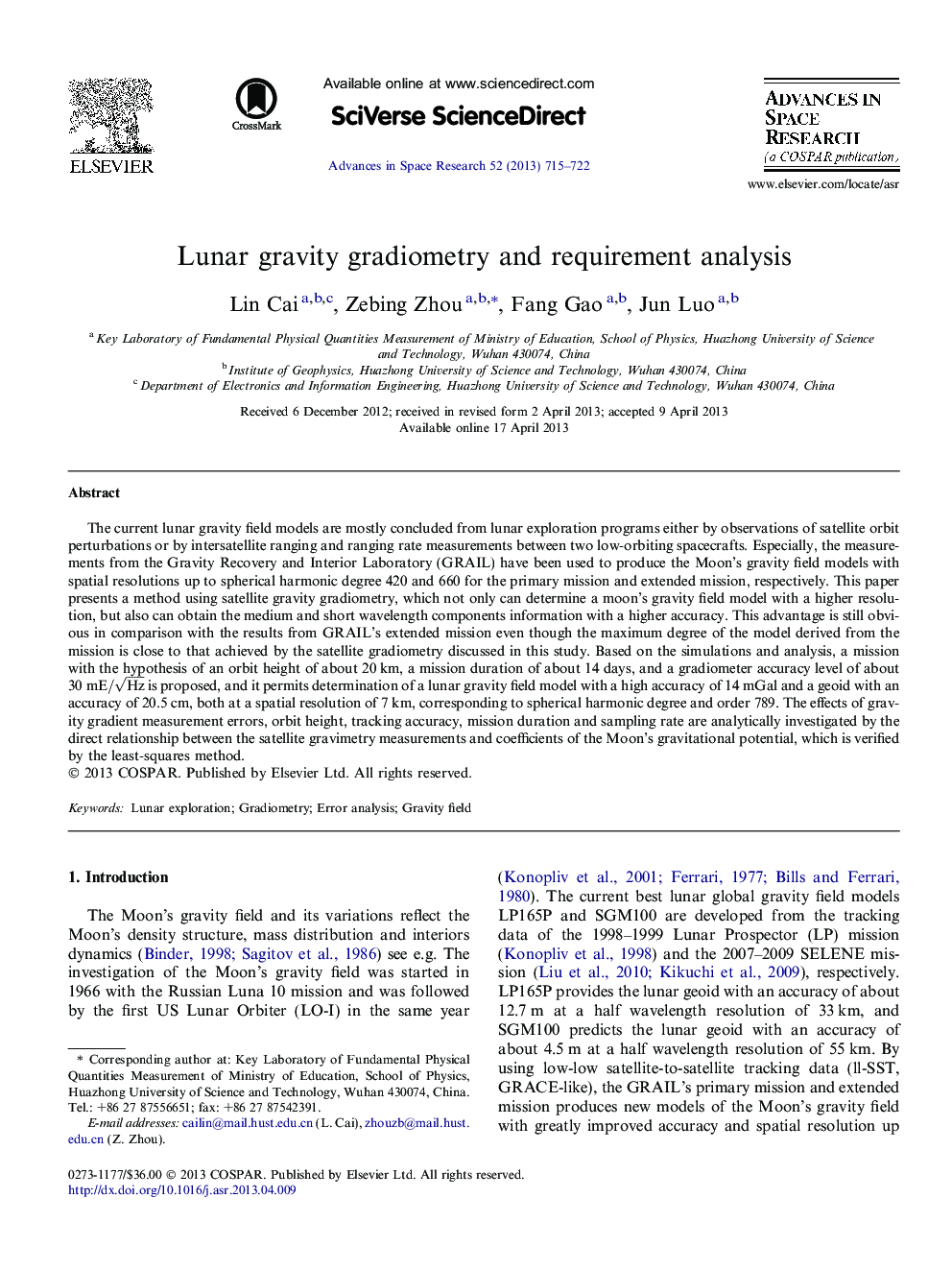| کد مقاله | کد نشریه | سال انتشار | مقاله انگلیسی | نسخه تمام متن |
|---|---|---|---|---|
| 10694369 | 1020039 | 2013 | 8 صفحه PDF | دانلود رایگان |
عنوان انگلیسی مقاله ISI
Lunar gravity gradiometry and requirement analysis
ترجمه فارسی عنوان
گرادیوم گرانش قمری و تحلیل نیاز
دانلود مقاله + سفارش ترجمه
دانلود مقاله ISI انگلیسی
رایگان برای ایرانیان
کلمات کلیدی
اکتشاف قمری، گرادیومتری، تجزیه و تحلیل خطا، میدان گرانشی،
موضوعات مرتبط
مهندسی و علوم پایه
علوم زمین و سیارات
علوم فضا و نجوم
چکیده انگلیسی
The current lunar gravity field models are mostly concluded from lunar exploration programs either by observations of satellite orbit perturbations or by intersatellite ranging and ranging rate measurements between two low-orbiting spacecrafts. Especially, the measurements from the Gravity Recovery and Interior Laboratory (GRAIL) have been used to produce the Moon's gravity field models with spatial resolutions up to spherical harmonic degree 420 and 660 for the primary mission and extended mission, respectively. This paper presents a method using satellite gravity gradiometry, which not only can determine a moon's gravity field model with a higher resolution, but also can obtain the medium and short wavelength components information with a higher accuracy. This advantage is still obvious in comparison with the results from GRAIL's extended mission even though the maximum degree of the model derived from the mission is close to that achieved by the satellite gradiometry discussed in this study. Based on the simulations and analysis, a mission with the hypothesis of an orbit height of about 20Â km, a mission duration of about 14 days, and a gradiometer accuracy level of about 30Â mE/Hz is proposed, and it permits determination of a lunar gravity field model with a high accuracy of 14Â mGal and a geoid with an accuracy of 20.5Â cm, both at a spatial resolution of 7Â km, corresponding to spherical harmonic degree and order 789. The effects of gravity gradient measurement errors, orbit height, tracking accuracy, mission duration and sampling rate are analytically investigated by the direct relationship between the satellite gravimetry measurements and coefficients of the Moon's gravitational potential, which is verified by the least-squares method.
ناشر
Database: Elsevier - ScienceDirect (ساینس دایرکت)
Journal: Advances in Space Research - Volume 52, Issue 4, 15 August 2013, Pages 715-722
Journal: Advances in Space Research - Volume 52, Issue 4, 15 August 2013, Pages 715-722
نویسندگان
Lin Cai, Zebing Zhou, Fang Gao, Jun Luo,
